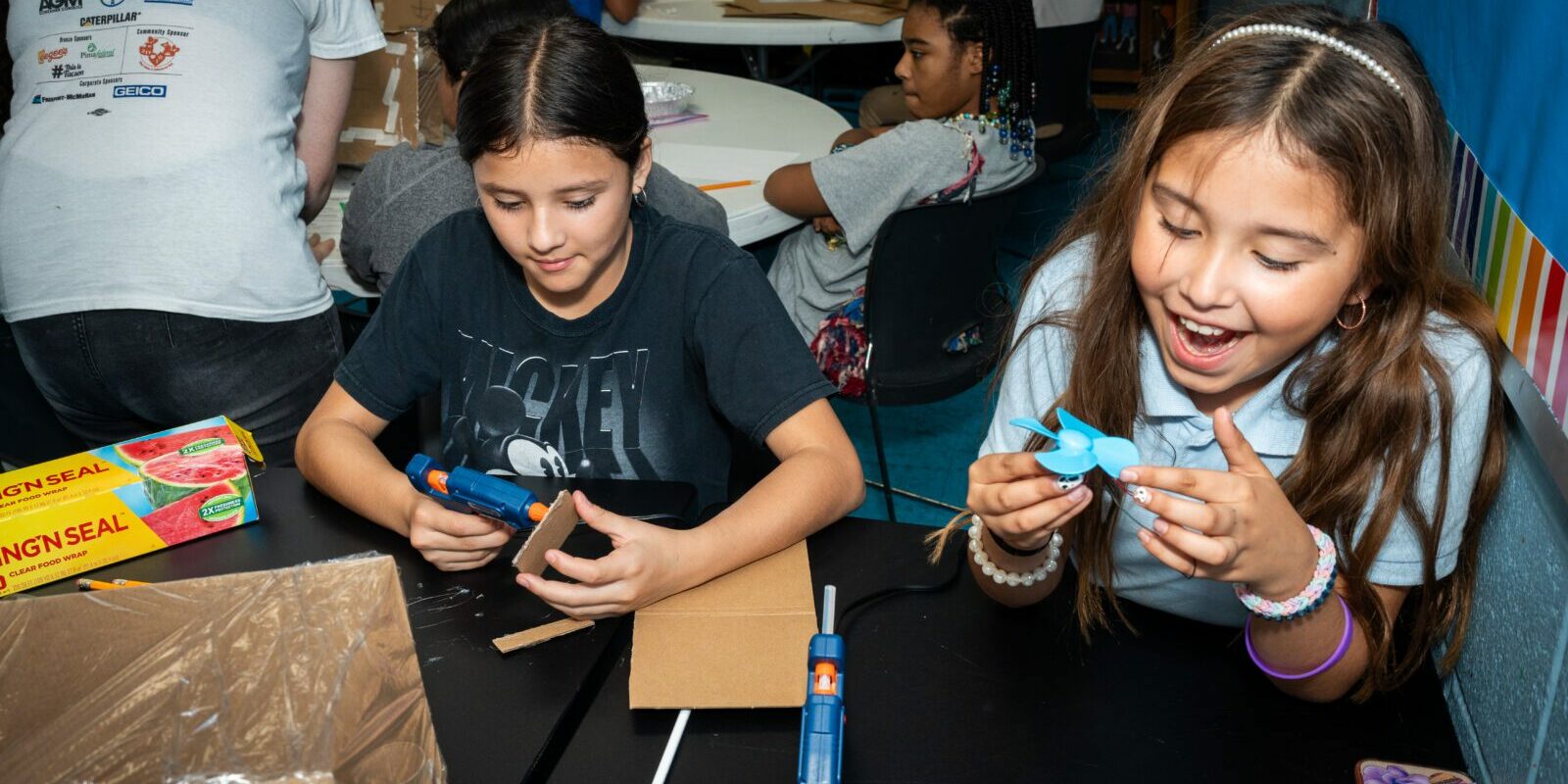Pima County, Arizona, is a vibrant, diverse region along the state’s southern border. It includes the city of Tucson, where most of its population lives. Surrounded by mountains and filled with sunshine, Tucson was named one of Time magazine’s World’s Greatest Places this year.
Despite its draw as a global destination, 18.4% of young people in Pima County are living in poverty, and racial disparities persist. Cradle to Career Partnership (C2C) has set out to change that. Anchored at United Way of Tucson and Southern Arizona, the team’s mission is to prepare every child for success in school and life, ensuring the economic vitality of the community.
What does systems change look like in Pima County?
The Cradle to Career Network member aligns partners across the community — including schools, nonprofits, businesses and more — around a shared vision to put more young people on a path to economic mobility. To change the systems that impact young people, C2C provides critical supports for effective data use to address the root causes of disparities and engages youth and families in decision making.

The powerful changes they’ve made in the region have earned the Systems Change designation along the StriveTogether Theory of Action™. This work is positively impacting outcomes from cradle to career.
Improving early childhood outcomes
Since its launch, C2C partners have led efforts to ensure every child enters kindergarten ready to succeed. The partnership focuses on strengthening Pima County’s early childhood education infrastructure, using data to measure progress. As a result, additional public and private funding has expanded scholarships for families to enroll their children in high-quality early education. The Pima Early Education Program Scholarships (PEEPS) initiative has also expanded accessibility to these resources, changing the income requirement to increase the number of eligible children. This shift allowed PEEPS to serve an additional 1,276 children by its third year.
Additionally, C2C’s data infrastructure is supporting improvements to home visitation, which is key to strong starts. Home visitors help new parents support their baby’s development and connect families with resources, leading to increased school readiness and child well-being. Data showed that families often disengaged from programs after a change in their home visitor. C2C staff designed a survey with home visitation supervisors and staff to learn about job satisfaction, reasons for changing careers and more. This data supported strategies to improve home visitor consistency. Shifts include revising job descriptions for home visitation staff, establishing a formal mentoring process for new hires, and adapting roles to the strengths of home visitors.

Improving K-12 outcomes
C2C works with school district partners, helping them use data to shift practices and get better outcomes for K-12 students. In one example, the team visualized data around students’ reading progress. Rather than focusing on the percent of students on track, teachers now see growth by quarter and classroom-level trends.
This data, along with facilitated team meetings, enables teachers, specialists and administrators to see if their strategies are improving students’ reading proficiency in real time. Teachers can identify which students need additional support and target strategies to them. When data shows that a strategy is promising, the administration implements it more broadly.
Marana Unified School District, for example, has implemented improvement efforts with C2C that led to a 21% increase in the average reading proficiency for students in the focus group from kindergarten to fourth grade. In the town of Sahuarita, partners worked to increase the average percentage of students mastering their phonics screener at 80% or above at the beginning of the year. The work led to a 30% increase in one year. Early literacy has a lifelong impact — students who are proficient in reading at the end of third grade are four times more likely to graduate from high school.

Other C2C work focuses on getting young people reconnected to school and work opportunities. Goodwill offers support at Reengagement Centers (RECs), and C2C helped expand this successful strategy through an initiative called Youth on the Rise. The team helped REC staff determine causes for youth disengagement, identify strategies, collect and analyze data, and connect with community partners. In 2023, Goodwill opened two additional RECs, each expected to serve 500 more youth every year. Together, Goodwill and C2C have served over 1,900 youth throughout Pima County.
One of the new RECs will work to decrease the number of Black youth referrals to the justice system. Black youth in Pima County are twice as likely to be referred to the court as white youth, and Black youth in zip codes in and around the REC site are three to four times more likely to be referred to the court. This new REC works to disrupt the pipeline of Black youth entering the justice system.
Improving postsecondary and workforce outcomes
C2C partners found that job training programs and placements lead to meaningful employment for young people — but many don’t have access to these opportunities. Traditional workforce development opportunities can feel overwhelming and don’t fully meet their needs. 
To create more equitable career pathways, cross-sector partners tapped into each other’s resources and expertise, along with the lived experiences of youth, to design and offer holistic, youth-centered professional development. Partners in this work include the Pima County School Superintendent’s Office, Goodwill Industries of Southern Arizona, the United Way of Tucson and Southern Arizona, and hospitality sector employers. Young people co-designed these workshops, identifying the topics that interest them. Workshops shared skills like self-regulation, mindfulness, communicating at work, and how skills from lived experiences can relate to the workplace. Each participant received a training stipend and gained a clear pathway to employment in a desirable sector. Based on positive feedback, the superintendent’s office plans to dedicate additional funds toward more workshops.
C2C’s work also supports the county’s systems of higher education. C2C advocated for Proposition 481, which increased the limit on the amount of money Pima Community College (PCC) can spend on students from already-allocated funds. Previously, PCC was restricted to the lowest per-student investment of any community college in Arizona. With these added resources, at no additional taxpayer cost, PCC can expand in-demand job training programs.
Opportunities like these are creating stronger futures for youth and families in Pima County, putting more young people on a path to economic mobility. Explore more stories of communities across the Cradle to Career Network that are changing systems.






